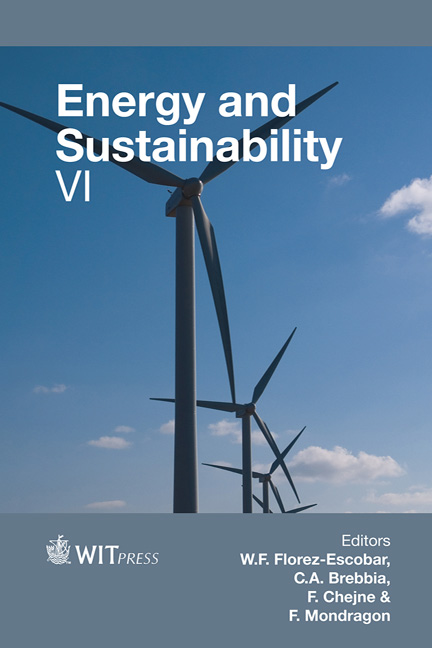Characterization Of Liquefied Waste Bamboo And White-rotted Wood
Price
Free (open access)
Transaction
Volume
195
Pages
12
Page Range
63 - 74
Published
2015
Size
1,100 kb
Paper DOI
10.2495/ESUS150061
Copyright
WIT Press
Author(s)
Q. Wang, H. Takahashi, Y. Takahashi, H. Kurokawa, K. Sekiguchi, K. Sugiyama
Abstract
Due to the depletion of fossil fuel resources, the utilization of sustainable and renewable biomass is studied in various fields. Wood liquefaction is one of the applicable methods for material utilization of waste biomass. In this study, valueless waste bamboo and white-rotted wood were liquefied for reuse as an alternative plastic material. The waste bamboo samples were liquefied in polyethylene glycol (PEG) with sulfuric acid as a catalyst. Then, the molecular weight distribution of the contents of the liquefied bamboo samples was analyzed using gel permeation chromatography (GPC) and the residue mass was also measured in order to investigate the residue contents. At the same time, the white-rotted woody samples were liquefied in phenol with sulfuric acid as a catalyst. Rotted woody samples and liquefied contents were analyzed with X-ray diffraction (XRD) and determined by GPC, and the residue contents were also compared with the results of non-rotted woody samples.
The waste bamboo samples were liquefied effectively under the reaction conditions of a temperature of 150°C, the acidic catalyst of 12% H2SO4 and 1/4 proportion of bamboo samples to solvent, respectively. The residue contents were the lowest at a reaction time of 30 minutes, and after that they were increased a reaction progressed. With the help of GPC analysis, it was found that the peaks of the contents of the liquefied bamboo samples at the initial reaction stage appeared at a high molecular weight distribution, which disappeared when the reaction progressed. When the white-rotted woody samples were liquefied, due to the low powder density, the samples did not perform well at the initial reaction stage. From GPC analysis of the liquefied contents, the liquefied tendency and the residue contents of the white-rotted woody samples seemed to be almost the same as those of the non-rotted original woody samples.
Keywords
liquefaction, waste bamboo, waste wood, white-rot fungi





